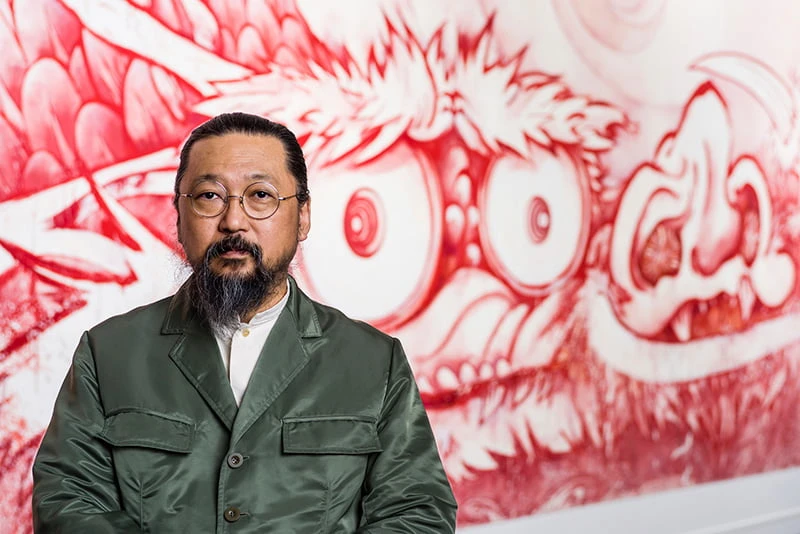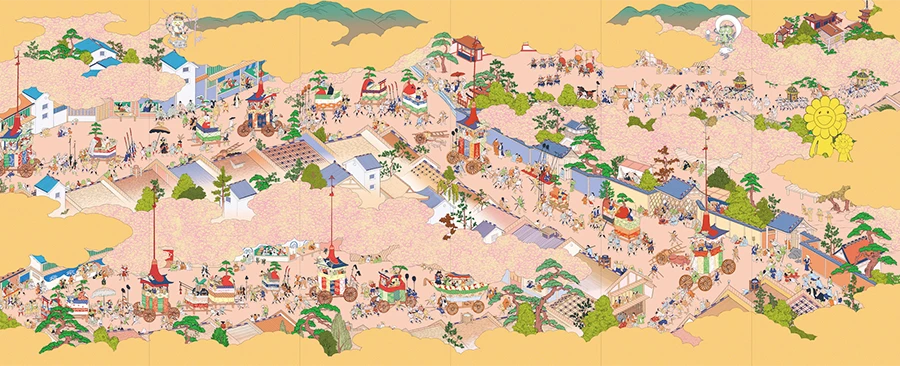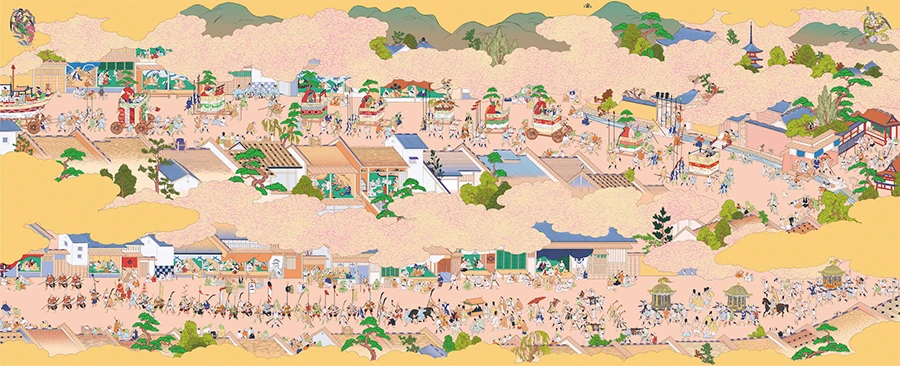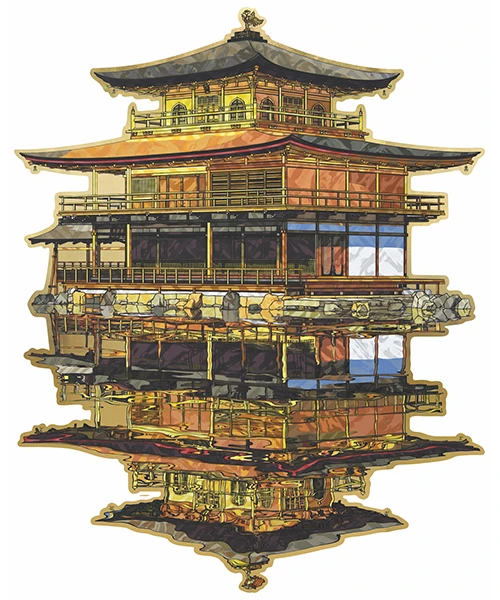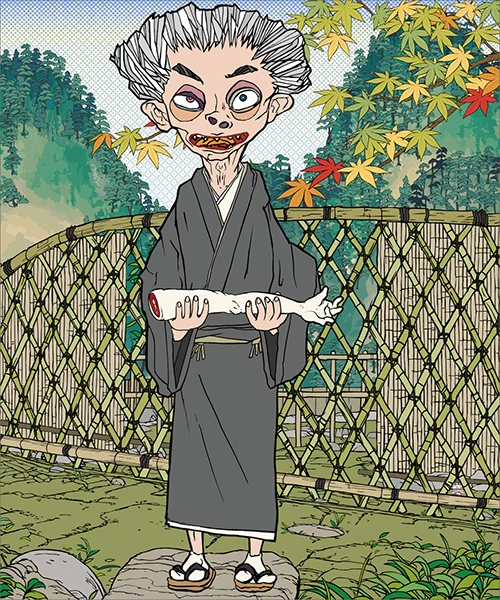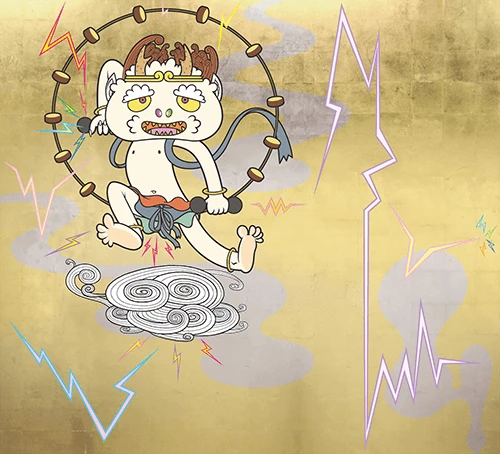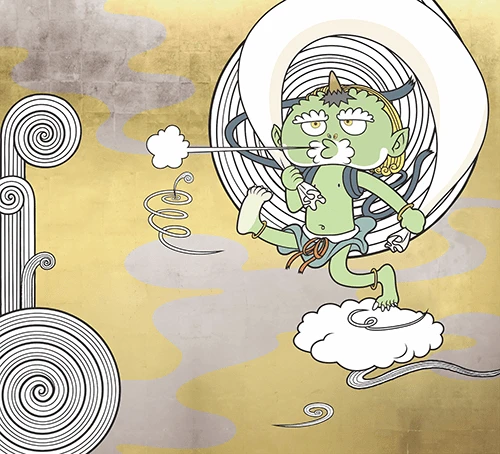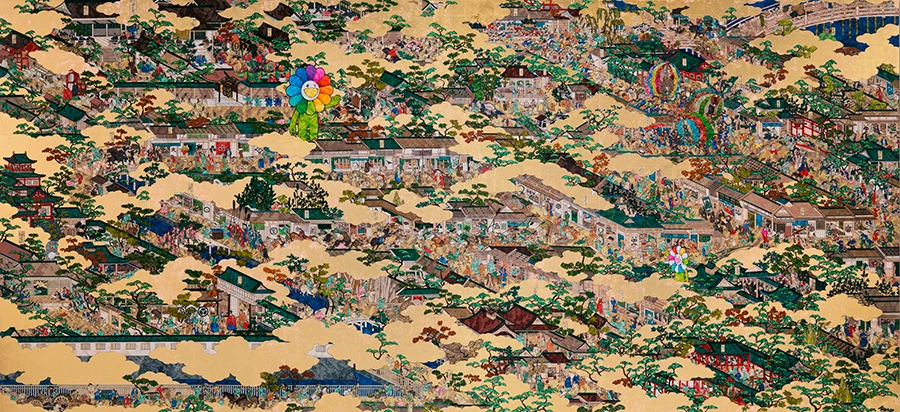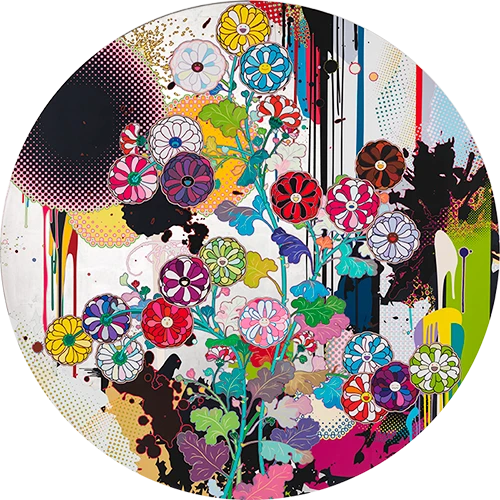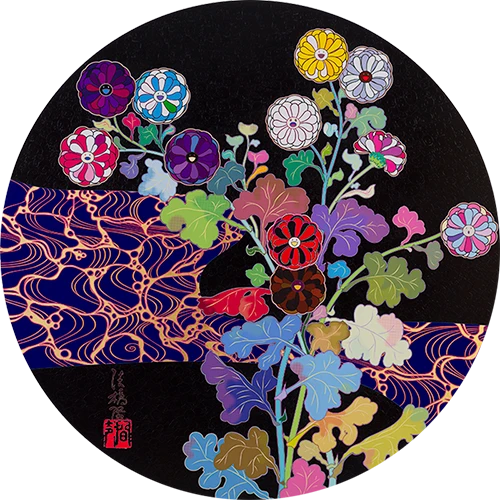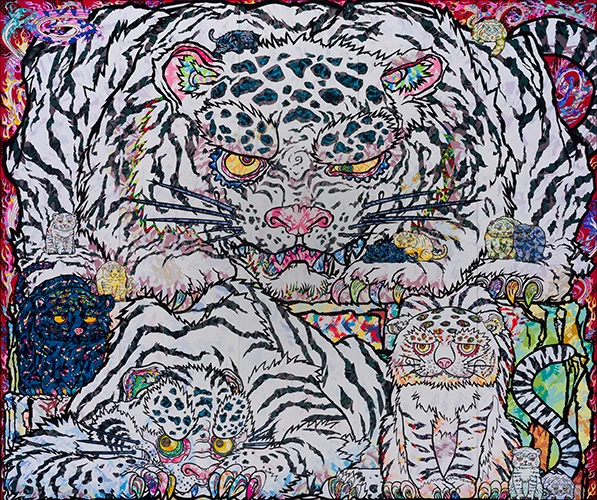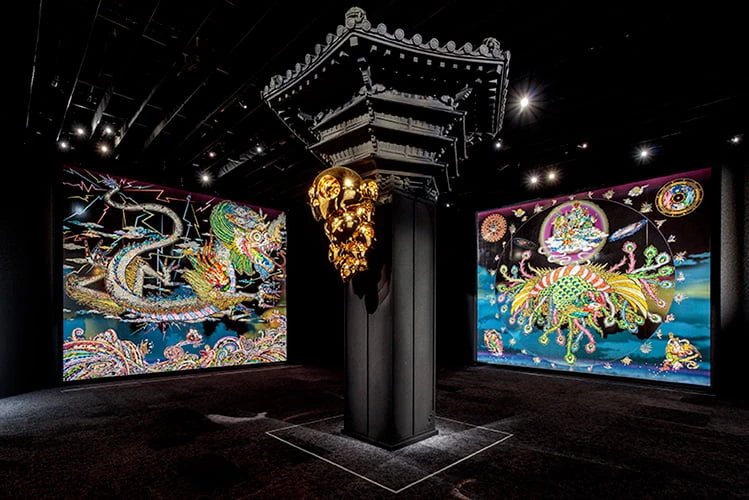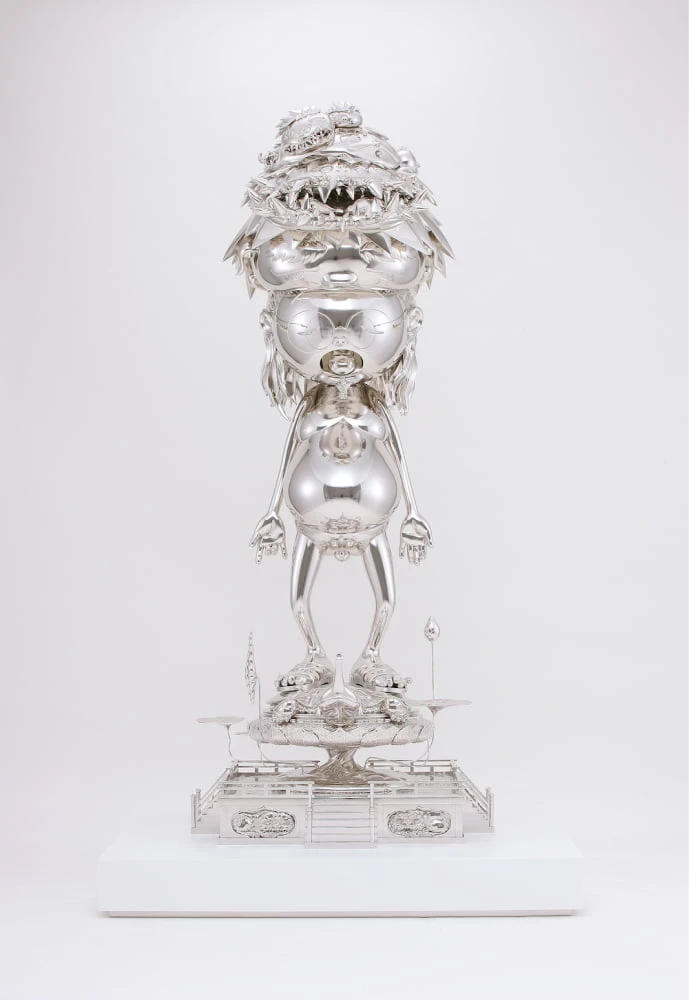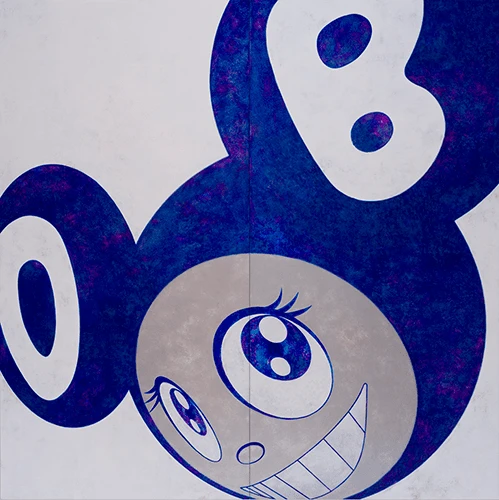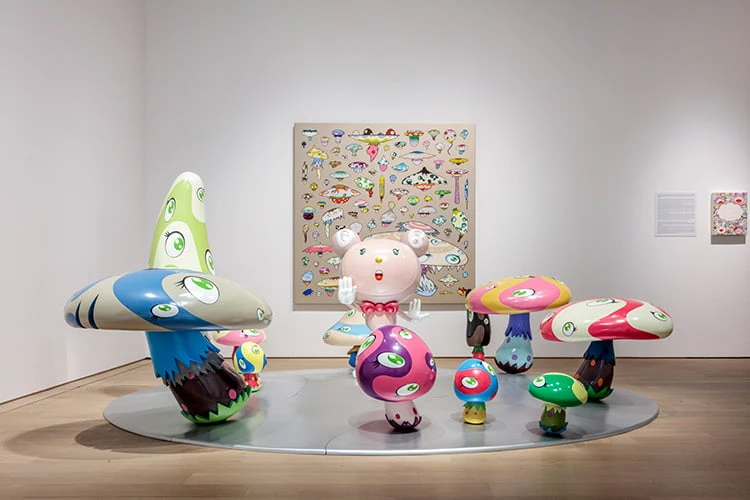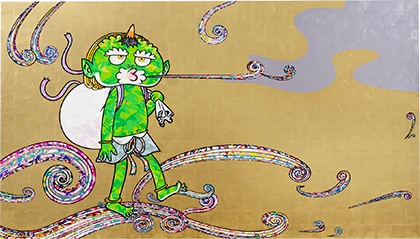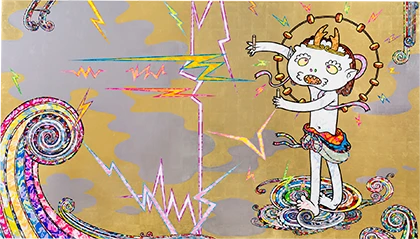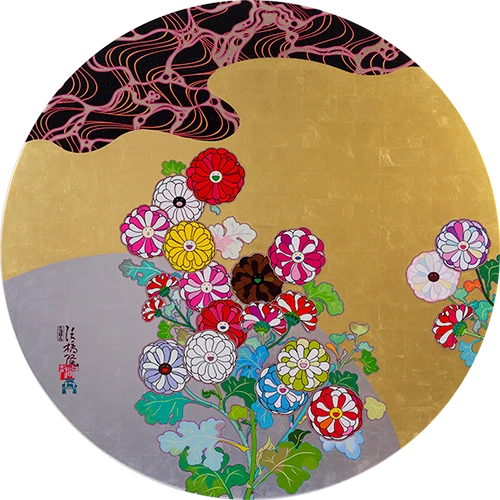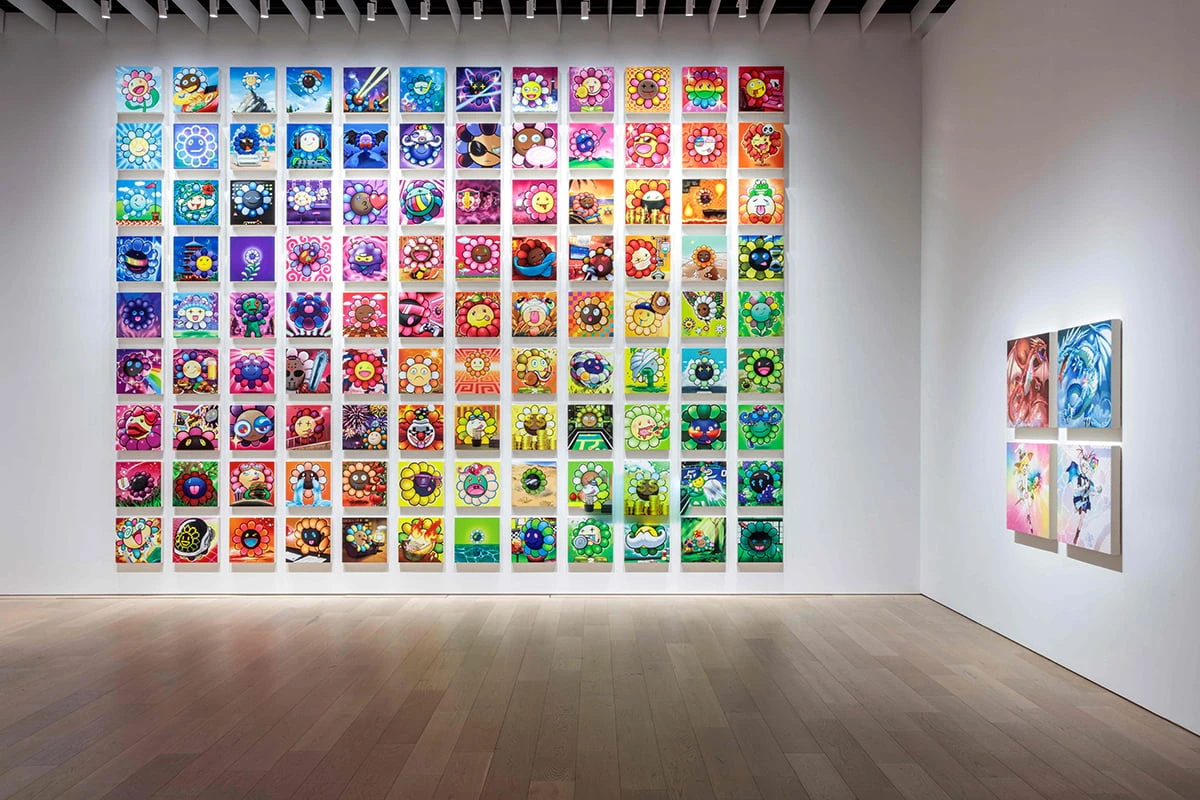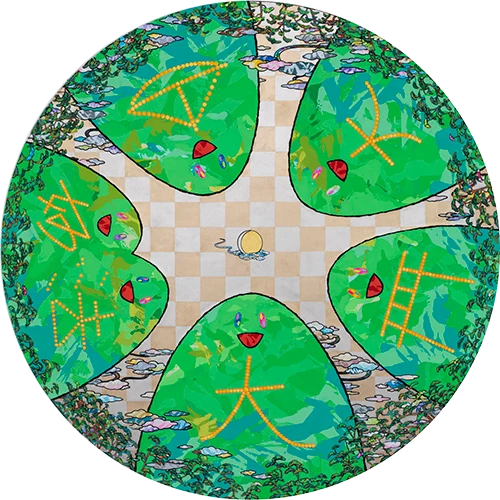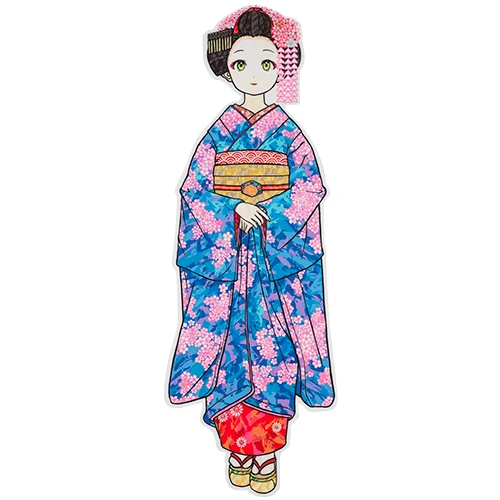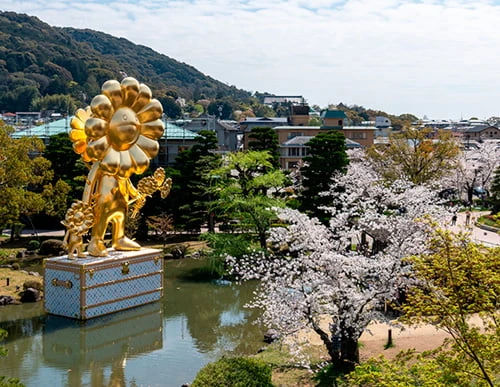
PROFILE / HIGHLIGHTS
Takashi Murakami
Born in Tokyo in 1962, Takashi Murakami completed his doctorate at Tokyo University of the Arts in 1993. His doctoral dissertation was titled “The Meaning of the Nonsense of the Meaning.” In 2000, he proposed the concept of “Superflat” as a form of contemporary culture that makes reference to the state of Japanese society by linking traditional Japanese art with the flatness of anime and manga. In 2001, he founded Kaikai Kiki Co., Ltd. and serves as its representative. In 2005, his exhibition Little Boy (Japan Society, New York) was awarded the Best Thematic Museum Show by the American branch of the International Association of Art Critics. In 2015, he received the 66th Minister of Education, Culture, Sports, Science and Technology Award for Fine Arts from the Agency for Cultural Affairs. Recent solo exhibitions include Stepping on the Tail of a Rainbow (The Broad, LA, 2022), MurakamiZombie (Busan Museum of Art, Busan, 2023), Understanding the New Cognitive Domain (Gagosian, Le Bourget, 2023), and Takashi Murakami: Unfamiliar People – Swelling of Monsterized Human Ego (Asian Art Museum, San Francisco, 2023).

